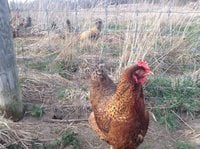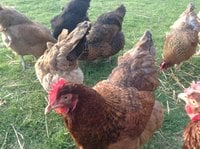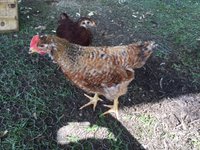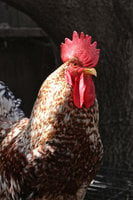General Information
- Breed Purpose
- Dual Purpose
- Comb
- Single
- Broodiness
- Average
- Climate Tolerance
- All Climates
- Egg Productivity
- High
- Egg Size
- Large
- Egg Color
- Light brown to tan
- Breed Temperament
- Extremely friendly
- Breed Colors/Varieties
- Only one variety which is almost red barred in roosters and a mix of brown and some interesting patterns in hens
- Breed Size
- Large Fowl
The Rhodebar is a rare British breed developed around 1950. There were apparently several strains developed at that time by a number of breeders, all of whom had the objective of creating an auto-sexing breed that was also an excellent egg layer. Breeds used in the creation of the Rhodebar included primarily Rhode Island Reds, Barred Plymouth Rocks and Golden Brussbars, Brussbars themselves being an auto-sexing breed developed from Barred Plymouth Rocks and Brown Sussex. Rhode Island Reds have been used again more recently to improve egg laying ability and type in the breed.
Because the Rhodebar was developed at the beginning of the commercial hybrid era, it only had a brief period of popularity before fading into obscurity. They are a very rare breed today in both the UK and in the US, to where they were imported around 2011.
Rhodebars are sturdy single combed, yellow skinned birds. Adult hens are primarily reddish barred in color and the males are very attractive multi-colored barred birds. The chicks should be easily sexable at hatch, with the males having lighter blond colored spotted down and females brown chipmunk striped down.
Rhodebar hens are excellent layers, producing 250 or so large brown eggs a year. They have calm temperaments and are generally not aggressive. They are considered a good choice for the small homesteader or for free ranging flocks, and especially anyone who wishes to be able to identify cockerels early on. The cockerels do make a fine, slow growing table bird.
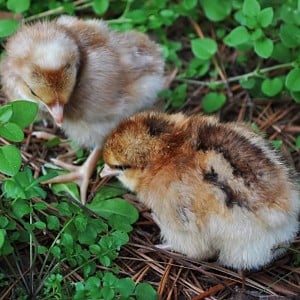
Rhodebar chicks
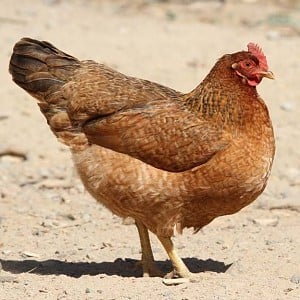
Rhodebar hen
For more information on this breed and their owner's and breeders' experiences with them, see our breed discussion here: https://www.backyardchickens.com/threads/chicken-breed-focus-rhodebar.1038085/

